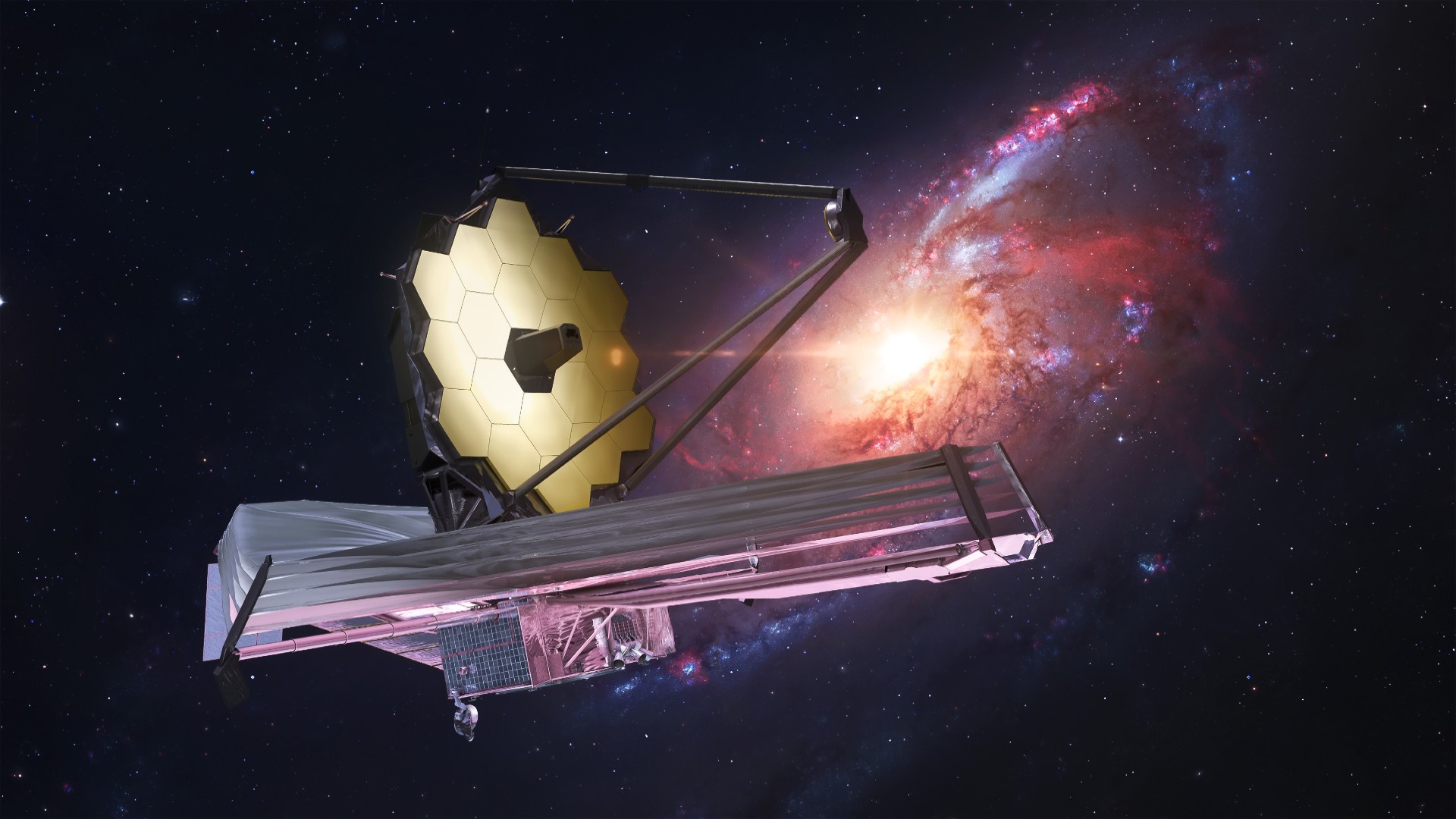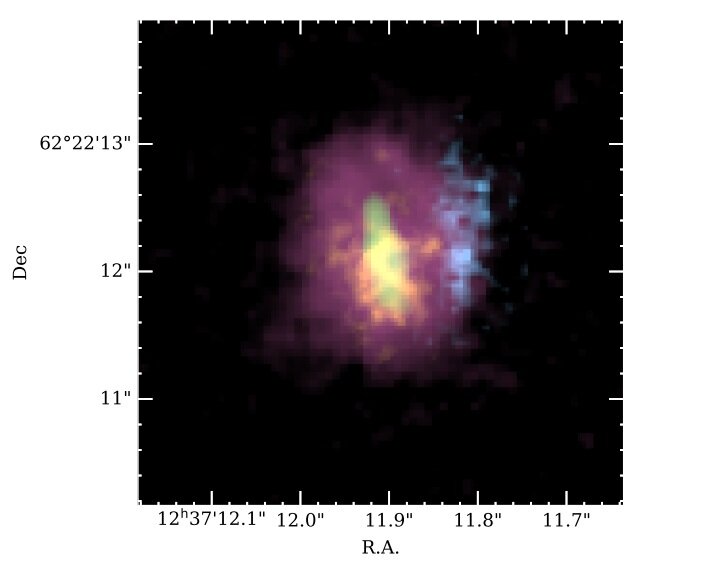
The James Webb Space Telescope (JWST) continues to peer backwards through cosmic time, revealing the processes that created the universe as we see it today.
Astronomers have used the James Webb Space Telescope to stare through the dusty clouds of a distant star-forming galaxy to investigate its structure in fine detail. They discovered that the galaxy is in the midst of a starburst, an explosive surge in star formation possibly caused by a collision with another galaxy.
Located at a distance of around 12 billion light-years away, the galaxy GN20 is one of the earliest active star-forming galaxies studied in detail thus far by astronomers. It also happens to be one of the most luminous dusty star-forming galaxies ever studied.
Related: James Webb Space Telescope (JWST) — A complete guide
GN20 is located in a region of space called a galaxy overdensity or a protocluster. In these regions, galaxies will eventually group together to form a massive collection called a galactic cluster.
The early galaxy, which was seen as it was when the 13.8 billion-year-old universe was just around 1.8 billion years old, is forming stars at a rate of around 1,860 times the mass of the sun each year. Clumpy molecular gas surrounds the galaxy expanding out to a diameter of around 46,000 light-years, and this star-forming matter is flattened into a giant rotating disk.
Star-forming galaxies are surrounded by dense clouds of dust and gas that collapse in over-dense patches to form stars; these also make them difficult to investigate. This is because these clouds are adept at absorbing visible light, but infrared light has a much easier time slipping through this star-forming matter. That means the JWST, which was designed to see the universe in infrared wavelengths, is ideal for peering beyond these dusty veils to see deep into these galaxies.
To study GN20 and unveil its properties, astronomers led by Spanish Astrobiology Center scientist Luis Colina used observations of this galaxy made by the JWST's Mid-Infrared Instrument (MIRI) between November 23 and 24, 2022.

The astronomers found that the early star-forming galaxy has a concentrated bright nucleus of densely clustered stars at its core surrounded by a diffuse envelope of gas. This inner structure of GN20 is birthing stars at a rate of about 500 times the mass of the sun each year and has been doing so for a period of around 100 million years.
The observations also showed this nucleus is under 2,600 light-years in diameter, while its gaseous envelope has a diameter of around 23,000 light-years.
The center of the gas is off-center in relation to GN20's dense nucleus of stars, implying that GN20 has recently undergone an encounter with another galaxy. This deformation in the gas envelope may have been the result of gravity tugging at it as the two galaxies passed each other, or it could be an artifact arising from a more permanent collision and merger between two galaxies. Interactions like this are often theorized to be the cause of intense periods of star formation in galaxies.
The team behind this research concluded that GN20 will eventually become a massive galaxy resembling those found in the local universe around the Milky Way with its bout of intense star formation eventually coming to an end leaving it inactive or quiescent.
A pre-print version of the team's research is currently featured on arXiv.org.







